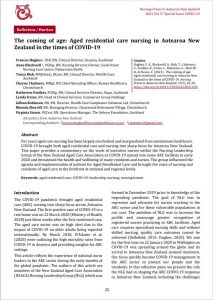
As the Interim Clinical Manager at Glenwood Home- a small, standalone facility in rural South Canterbury, I have been assisting the team to transition from one software application to HCSL.
I have used multiple different patient management systems during my many years in Aged Residential Care, some good, some not so good and I have been very impressed with HCSL:
- The transition to HCSL was extremely smooth- the video guides were extremely helpful in providing the ‘how to’ information.
- The support team at HCSL have been quick to answer questions and support us through this change
- We have all found the system to be simple and easy to use, it intuitively guides you through each stage of documentation.
- The viewing screens are clear, easy to read, not too busy and simple to move from one screen to another.
- Integration with Medi-Map and interRAI are a huge bonus- and extremely helpful in streamlining documentation.
- The Wound Management system is clear and easy to follow. All staff have found that creating an adverse event or infection event is straightforward.
- The Quality & Auditing component for me as a Clinical Manager is fantastic!
- The policies and procedures & Human Resources sections are also fantastic!
- As a standalone facility it is reassuring to us that the system complies fully with the Ngā Paerewa Health and Disability Services Standard
Having worked in both standalone facilities and for Corporates in both NZ and Australia, and worked with many different systems, I can honestly recommend HCSL as a system that works extremely well in the Residential Aged Care Setting in NZ- thank you !
Kind regards
Kim Harris
Interim Clinical Manager
Glenwood Home, Timaru


